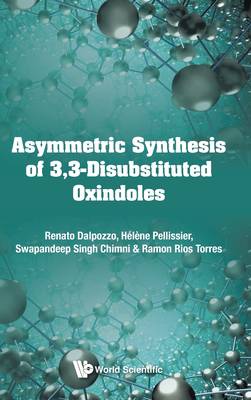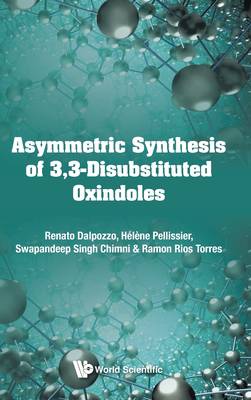
Je cadeautjes zeker op tijd in huis hebben voor de feestdagen? Kom langs in onze winkels en vind het perfecte geschenk!
- Afhalen na 1 uur in een winkel met voorraad
- Gratis thuislevering in België vanaf € 30
- Ruim aanbod met 7 miljoen producten
Je cadeautjes zeker op tijd in huis hebben voor de feestdagen? Kom langs in onze winkels en vind het perfecte geschenk!
- Afhalen na 1 uur in een winkel met voorraad
- Gratis thuislevering in België vanaf € 30
- Ruim aanbod met 7 miljoen producten
Zoeken
Asymmetric Synthesis of 3, 3-Disubstituted Oxindoles
Renato Dalpozzo, Helene Pellissier, Swapandeep Singh Chimni, Ramon Rios Torres
Hardcover | Engels
€ 195,45
+ 390 punten
Omschrijving
Indole derivatives are the most common heterocycle compounds present in nature, for this reason, they have been referred to as 'privileged structures'. In fact, many approved drugs -- and natural products -- belong to this family. Among indole derivatives, oxindoles have a structural complexity, which have stimulated generations of synthetic chemists to design strategies for assembling these structures, and their enantioselective synthesis is still growing.This book proposes to describe the known enantioselective syntheses of oxindole derivatives. It is divided in six chapters each referring to a specific class of asymmetric oxindole derivatives. After the introduction, Chapter 2 describes all-carbon spirooxindoles; Chapter 3, open chain 3,3-dialkyloxindoles; Chapter 4, 3-substituted-3-aminooxindoles; Chapter 5, 3-substituted-3-hydroxyoxindoles; Chapter 6, 3-hetero-3-substituted oxindoles. It will be a useful tool for synthetic chemists, who assemble total synthesis of natural products, as well as for drug discovery chemists either in academic or in industry R&S laboratories.
Specificaties
Betrokkenen
- Auteur(s):
- Uitgeverij:
Inhoud
- Aantal bladzijden:
- 320
- Taal:
- Engels
Eigenschappen
- Productcode (EAN):
- 9781786347299
- Verschijningsdatum:
- 18/09/2019
- Uitvoering:
- Hardcover
- Formaat:
- Genaaid
- Afmetingen:
- 152 mm x 229 mm
- Gewicht:
- 594 g

Alleen bij Standaard Boekhandel
+ 390 punten op je klantenkaart van Standaard Boekhandel
Beoordelingen
We publiceren alleen reviews die voldoen aan de voorwaarden voor reviews. Bekijk onze voorwaarden voor reviews.









